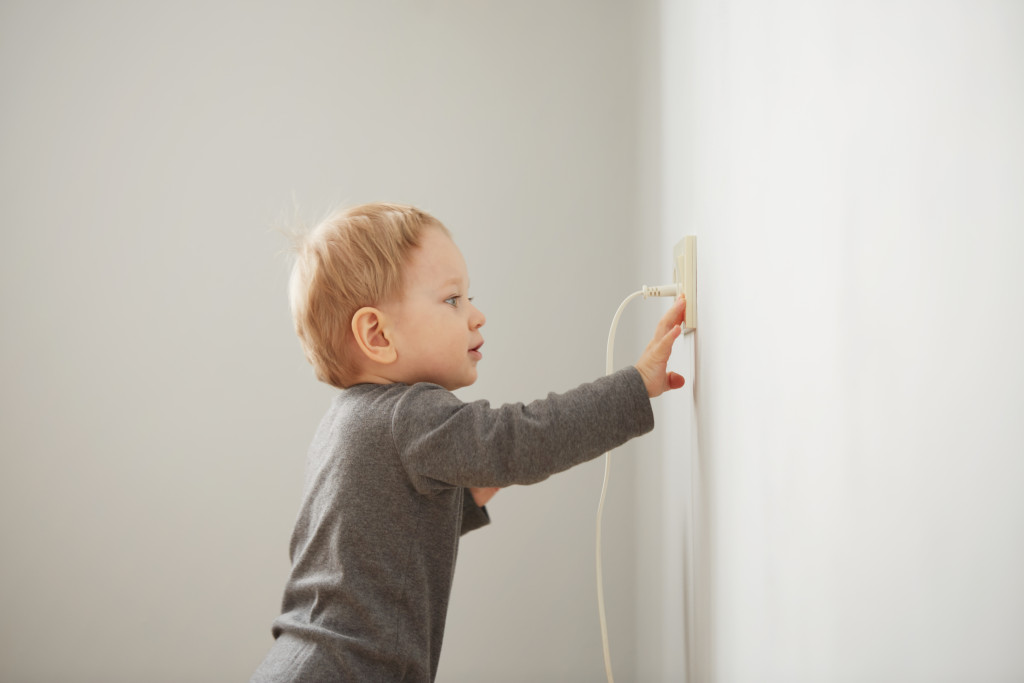• Identify and protect against common household hazards such as electrical, mold, and asbestos.
• Mold growth can be managed by regularly inspecting for moisture accumulation and water damage in basements, attics, and bathrooms.
• If there is suspicion of asbestos in your home, contact an asbestos specialist who can identify and safely remove it.
• Chemical products should always be used cautiously, checking the labels before use and ensuring adequate ventilation.
Many parents assume their homes are safe and secure, but hidden dangers lurk throughout our living spaces. These can be anything from electrical hazards to mold and asbestos. As parents, it is crucial to identify these potential risks and take steps to mitigate them. Here are some of the most common household hazards and how to protect your family.
Electrical Hazards
Homes with outdated or faulty wiring can cause a variety of electrical hazards, such as fires, shocks, or electrocutions. To prevent this danger, ensure all outlets have installed safety covers and inspect any exposed wiring for damage. If you notice any signs of wear or tear, contact a licensed electrician to replace the wiring immediately.
You should also check your home’s fuse box for any loose wires or blown fuses that may need replacing. Also, avoid using multiple power strips in one outlet, as this can overload the circuit breaker. Being proactive can also help you avoid these hazards. Here are some ways to do that:
Install Ground Fault Circuit Interrupters (GFCIs)
GFCIs regulate and monitor the flow of electricity in a home. They reduce the risk of electric shock by automatically shutting off when they detect a short circuit or ground fault. GFCIs should be installed in areas prone to water damage, such as kitchens, bathrooms, basements, and garages.
Have Breakers Installed
A surge of electricity can cause a power surge that leads to a fire. To protect your home from this hazard, have circuit breakers installed in all areas of the house. Circuit breakers are designed to detect and stop an overload of electricity before it causes damage.

Mold
Mold can often go unnoticed until it has grown out of control. Therefore, inspecting your home regularly for signs of moisture accumulation or water damage in areas like basements, attics, and bathrooms is crucial.
If you find yourself dealing with a mold problem in your house, consider hiring a professional mold remediation service that can adequately assess the extent of the issue and provide effective solutions for removing it from your home. Furthermore, ensure you address any moisture sources, such as leaking pipes or blocked gutters, as soon as possible to prevent future outbreaks from occurring in your home. Finally, if you find yourself with mold growth in your home, consider using vinegar to deal with it.
Vinegar
One of the best ways to remove mold is to use a mixture of vinegar and water. To make the mixture, mix one part vinegar with four parts warm water. Once the solution has been made, apply it directly onto the affected area and leave it for at least an hour before scrubbing it with a brush or rag.

Asbestos
Though asbestos was once widely used for insulation purposes until its hazardous health effects were discovered many years later. Although asbestos is now banned in many countries worldwide — including the United States — old buildings may still contain traces of it in their insulation material or floor tiles.
If you suspect your home has asbestos materials due to its age or construction materials used when it was built, then contact an asbestos specialist who can identify and safely remove all traces of this hazardous material from your property before further exposure occurs.
Chemical Fumes
Your home may contain hazardous chemical fumes that can damage your health. To protect yourself and your loved ones, always check the labels of any household products before use and do your best to ensure adequate ventilation when using these items. In addition, there are other ways to prevent this accident.
Install Hard to Reach Cupboards
If you have children or pets in your home, install cupboards that can be out of reach, so they remain safe from potentially dangerous products.
Keep an Eye on Fumes and Vapors
Fumes and vapors can spread quickly throughout your home, so keep the windows open while using chemical products to ensure proper ventilation. Additionally, install robust chemical monitoring equipment in your home. The equipment should be able to detect a variety of different gases and vapors, alerting you when they reach unsafe levels.
Your home is where you and your family should feel safe, so it’s essential to be aware of potential household hazards. By understanding the different types of dangers lurking in the home and taking steps to protect yourself, you can ensure your living space is safe for everyone.

